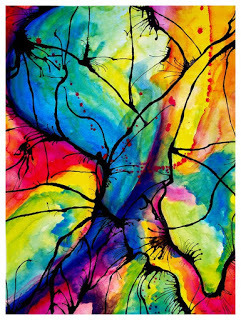Pearl Zhu's Blog, page 1376
December 29, 2015
CIO’s Digital Agenda XXV: Customer-Centricity is a Digital Theme
How to become a customer-centric business is in every forward-thinking organization’s agenda.
 The “Future of CIO” Blog has reached 1.2 million page views with about 2300+ blog posting in 59+ different categories of leadership, management, strategy, digitalization, change/talent, etc. The content richness is not for its own sake, but to convey the vision and share the wisdom.
The “Future of CIO” Blog has reached 1.2 million page views with about 2300+ blog posting in 59+ different categories of leadership, management, strategy, digitalization, change/talent, etc. The content richness is not for its own sake, but to convey the vision and share the wisdom.
Digital is the age of customers. Thus, Customer Experience Management is key to the success of every forward-looking business. It is not just important, it is vital for growth, development and to make sure you stay in business, Both retaining a customer and winning a new customer are very important to every business’s surviving and thriving.
Customer-Centricity is a Digital Theme A Customer-centric mind: How to become a customer-centric business is in every forward-thinking organization’s agenda, it requires not only management but each digital professional to shape such a customer-centric mind, think from the lenses of customers, outside-in, instead of inside-out, more specifically, what’s the thought processes evolve and how to shape a customer-centric mind?
A Customer-Centric Strategy: In essence, the digital era is the age of customer; customer-centricity becomes the goal to right fit business’s purpose –to create more customers. However, since there are many elements to customer-centricity, the key to success is to focus on something that will "move the needle." For some companies, it's the customer experience; for others, it;s product excellence. And some can build loyalty through low cost/price., etc. So how should forward-looking organizations craft their customer-centric strategy?
How IT Change Management Aims at Improving Customer Experience? Digital is the age of the customer, being a customer-centric business is in every forward-thinking organization’s agenda. Corporate IT plays a significant role in digitizing every touch point of customer experience and sharpening key business capabilities. IT implementations are core to strategic changes today. However, many IT organizations fail to reach customers’ expectation fully. Did it achieve the original objective? Did the customer experience actually improve significantly? And, how sustainable is the change or would it break down? Has the entire organization embraced it well? What are the IT change management principles & implementation best practices?
Customer-Centric Innovation: One of the key characteristics of digital business is customer centricity. Thus, the customer is absolutely a vital part of the overall innovation process. Customer-centric innovation accomplishes far more than incremental product improvement, it can also build evolutionary business models, as well as path-breaking products and services that establish new categories, and even internal process improvements arise from customer-centric innovation.
Five Steps IT Customer Satisfaction Surveys Go Beyond Routine: Most of the CIOs think IT customer satisfaction surveys help them to listen to users, adjust IT roadmap & plan to accommodate changes customers’ need, and help evaluate IT performance; But some IT leaders argue such survey is just a routine, won’t help IT from out of touch, ivory tower service, the survey result may not be objective to capture the truth what IT need, and psychology behind survey may not be so positive to help IT improve performance. Is there value in regular IT Customer Satisfaction Surveys? What’s the best way to do it?
 What are the best ways to demonstrate IT value? IT is at the cross road, some high-performing IT organizations have built solid value proposition, and moved up its maturity to become the game changer and business catalyst in their companies. However, the majority of IT organizations get stuck in the lower-level of maturity and struggle to prove their unique value, for helping the business gain competitive advantage. So what are the best ways to demonstrate IT value, through analytics or metrics up front; through business cases or portfolios; through governance discipline; through agile practice or just through business-IT mutual understanding?
What are the best ways to demonstrate IT value? IT is at the cross road, some high-performing IT organizations have built solid value proposition, and moved up its maturity to become the game changer and business catalyst in their companies. However, the majority of IT organizations get stuck in the lower-level of maturity and struggle to prove their unique value, for helping the business gain competitive advantage. So what are the best ways to demonstrate IT value, through analytics or metrics up front; through business cases or portfolios; through governance discipline; through agile practice or just through business-IT mutual understanding?
Blogging is not about writing, but about thinking; it’s not just about WHAT to say, but about WHY to say, and HOW to say it. It reflects the color and shade of your thought patterns, and it indicates the peaks and curves of your thinking waves. Unlike pure entertainment, quality and professional content takes time for digesting, contemplation and engaging, and therefore, it takes the time to attract the "hungry minds" and the "deep souls." It’s the journey to amplify your voice, deepen your digital footprints, and match your way for human progression.Follow us at: @Pearl_Zhu
 The “Future of CIO” Blog has reached 1.2 million page views with about 2300+ blog posting in 59+ different categories of leadership, management, strategy, digitalization, change/talent, etc. The content richness is not for its own sake, but to convey the vision and share the wisdom.
The “Future of CIO” Blog has reached 1.2 million page views with about 2300+ blog posting in 59+ different categories of leadership, management, strategy, digitalization, change/talent, etc. The content richness is not for its own sake, but to convey the vision and share the wisdom.
Digital is the age of customers. Thus, Customer Experience Management is key to the success of every forward-looking business. It is not just important, it is vital for growth, development and to make sure you stay in business, Both retaining a customer and winning a new customer are very important to every business’s surviving and thriving.
Customer-Centricity is a Digital Theme A Customer-centric mind: How to become a customer-centric business is in every forward-thinking organization’s agenda, it requires not only management but each digital professional to shape such a customer-centric mind, think from the lenses of customers, outside-in, instead of inside-out, more specifically, what’s the thought processes evolve and how to shape a customer-centric mind?
A Customer-Centric Strategy: In essence, the digital era is the age of customer; customer-centricity becomes the goal to right fit business’s purpose –to create more customers. However, since there are many elements to customer-centricity, the key to success is to focus on something that will "move the needle." For some companies, it's the customer experience; for others, it;s product excellence. And some can build loyalty through low cost/price., etc. So how should forward-looking organizations craft their customer-centric strategy?
How IT Change Management Aims at Improving Customer Experience? Digital is the age of the customer, being a customer-centric business is in every forward-thinking organization’s agenda. Corporate IT plays a significant role in digitizing every touch point of customer experience and sharpening key business capabilities. IT implementations are core to strategic changes today. However, many IT organizations fail to reach customers’ expectation fully. Did it achieve the original objective? Did the customer experience actually improve significantly? And, how sustainable is the change or would it break down? Has the entire organization embraced it well? What are the IT change management principles & implementation best practices?
Customer-Centric Innovation: One of the key characteristics of digital business is customer centricity. Thus, the customer is absolutely a vital part of the overall innovation process. Customer-centric innovation accomplishes far more than incremental product improvement, it can also build evolutionary business models, as well as path-breaking products and services that establish new categories, and even internal process improvements arise from customer-centric innovation.
Five Steps IT Customer Satisfaction Surveys Go Beyond Routine: Most of the CIOs think IT customer satisfaction surveys help them to listen to users, adjust IT roadmap & plan to accommodate changes customers’ need, and help evaluate IT performance; But some IT leaders argue such survey is just a routine, won’t help IT from out of touch, ivory tower service, the survey result may not be objective to capture the truth what IT need, and psychology behind survey may not be so positive to help IT improve performance. Is there value in regular IT Customer Satisfaction Surveys? What’s the best way to do it?
 What are the best ways to demonstrate IT value? IT is at the cross road, some high-performing IT organizations have built solid value proposition, and moved up its maturity to become the game changer and business catalyst in their companies. However, the majority of IT organizations get stuck in the lower-level of maturity and struggle to prove their unique value, for helping the business gain competitive advantage. So what are the best ways to demonstrate IT value, through analytics or metrics up front; through business cases or portfolios; through governance discipline; through agile practice or just through business-IT mutual understanding?
What are the best ways to demonstrate IT value? IT is at the cross road, some high-performing IT organizations have built solid value proposition, and moved up its maturity to become the game changer and business catalyst in their companies. However, the majority of IT organizations get stuck in the lower-level of maturity and struggle to prove their unique value, for helping the business gain competitive advantage. So what are the best ways to demonstrate IT value, through analytics or metrics up front; through business cases or portfolios; through governance discipline; through agile practice or just through business-IT mutual understanding?Blogging is not about writing, but about thinking; it’s not just about WHAT to say, but about WHY to say, and HOW to say it. It reflects the color and shade of your thought patterns, and it indicates the peaks and curves of your thinking waves. Unlike pure entertainment, quality and professional content takes time for digesting, contemplation and engaging, and therefore, it takes the time to attract the "hungry minds" and the "deep souls." It’s the journey to amplify your voice, deepen your digital footprints, and match your way for human progression.Follow us at: @Pearl_Zhu
Published on December 29, 2015 22:59
“Digital Master” Holiday Intense Tuning Chap IV: Three Debates about Business’s Digital Capabilities
Digital business capabilities are dynamic and complex in design, with recombinant nature.
 Business capability, in general, is defined as the ability to perform or achieve certain actions or outcomes through a set of controllable and measurable faculties, features, functions, processes, or services. It is the ability of the business to consistently deliver an expected result. Organizational capabilities are delivered when various resources work together for a purpose to achieve an outcome. And the organization’s digital capabilities are business competency to execute its digital strategy and deliver value to its customers. Here are three debates brainstormed in the book of “Digital Master” to further clarify and deepen the understanding about business capabilities which underpin strategy execution. (1) Is Business Capability equal to business process?A: The business capability is at a high level than a business process, it is in the conceptual layer. It is the company’s ability to integrate, build, and reconfigure internal and external competencies to address increasing changing environment, the ability the organization can perform a specific set of functional activities repetitively to achieve the consistent results. A capability is comprised of people, process, technology, and assets. And business processes are then a succession of activities that define and support business capabilities and business processes are enabled by technology and people within the framework of a capability. Capabilities can be an enormous help in understanding and prioritizing the changes business and IT are attempting to create.
Business capability, in general, is defined as the ability to perform or achieve certain actions or outcomes through a set of controllable and measurable faculties, features, functions, processes, or services. It is the ability of the business to consistently deliver an expected result. Organizational capabilities are delivered when various resources work together for a purpose to achieve an outcome. And the organization’s digital capabilities are business competency to execute its digital strategy and deliver value to its customers. Here are three debates brainstormed in the book of “Digital Master” to further clarify and deepen the understanding about business capabilities which underpin strategy execution. (1) Is Business Capability equal to business process?A: The business capability is at a high level than a business process, it is in the conceptual layer. It is the company’s ability to integrate, build, and reconfigure internal and external competencies to address increasing changing environment, the ability the organization can perform a specific set of functional activities repetitively to achieve the consistent results. A capability is comprised of people, process, technology, and assets. And business processes are then a succession of activities that define and support business capabilities and business processes are enabled by technology and people within the framework of a capability. Capabilities can be an enormous help in understanding and prioritizing the changes business and IT are attempting to create.
(2) How to Determine if a Capability is a Core Capability?
Top leadership/management in an organization defines a business strategy, in order to reach the business vision, a set of core capabilities are needed to meet and implement the strategy. So the core capabilities could be those that are identified as delivering the competitive products, services, and customer experiences than competitors. And an organization needs to ask whether they need the capability at the base level to keep the light on; at the competitive level to stay competitive in the business and at a differentiating level to be the key differentiator for its business.
(3) How to Map IT Capabilities to Business Capabilities?
 Business capabilities are a hierarchical decomposition of “WHAT” the organization does, all the work is actually done by business processes which are the “HOW” part to the question; while, at the age of digital, all key business processes are enabled by enterprise IT capabilities and digital technologies. So IT capabilities to business capabilities mapping is trying to assess and define how interconnected the IT organization is to the business and trying to determine the ROI for their IT investment. The business-IT alignment includes mapping IT capabilities to either at strategic work or tactical level in identifying business IT alignment issues. Generally speaking, capabilities are the best for strategic work and processes are the best if you are working at a tactical level.
Business capabilities are a hierarchical decomposition of “WHAT” the organization does, all the work is actually done by business processes which are the “HOW” part to the question; while, at the age of digital, all key business processes are enabled by enterprise IT capabilities and digital technologies. So IT capabilities to business capabilities mapping is trying to assess and define how interconnected the IT organization is to the business and trying to determine the ROI for their IT investment. The business-IT alignment includes mapping IT capabilities to either at strategic work or tactical level in identifying business IT alignment issues. Generally speaking, capabilities are the best for strategic work and processes are the best if you are working at a tactical level.
Digital business capabilities are dynamic and complex in design, with recombinant nature requiring cross-functional collaboration and agility to adapt to changes. But the right set of digital capabilities will directly decide the overall business’s competency, and how well it can execute digital strategy and deliver values to customers to build a long-term winning position. Follow us at: @Pearl_Zhu
 Business capability, in general, is defined as the ability to perform or achieve certain actions or outcomes through a set of controllable and measurable faculties, features, functions, processes, or services. It is the ability of the business to consistently deliver an expected result. Organizational capabilities are delivered when various resources work together for a purpose to achieve an outcome. And the organization’s digital capabilities are business competency to execute its digital strategy and deliver value to its customers. Here are three debates brainstormed in the book of “Digital Master” to further clarify and deepen the understanding about business capabilities which underpin strategy execution. (1) Is Business Capability equal to business process?A: The business capability is at a high level than a business process, it is in the conceptual layer. It is the company’s ability to integrate, build, and reconfigure internal and external competencies to address increasing changing environment, the ability the organization can perform a specific set of functional activities repetitively to achieve the consistent results. A capability is comprised of people, process, technology, and assets. And business processes are then a succession of activities that define and support business capabilities and business processes are enabled by technology and people within the framework of a capability. Capabilities can be an enormous help in understanding and prioritizing the changes business and IT are attempting to create.
Business capability, in general, is defined as the ability to perform or achieve certain actions or outcomes through a set of controllable and measurable faculties, features, functions, processes, or services. It is the ability of the business to consistently deliver an expected result. Organizational capabilities are delivered when various resources work together for a purpose to achieve an outcome. And the organization’s digital capabilities are business competency to execute its digital strategy and deliver value to its customers. Here are three debates brainstormed in the book of “Digital Master” to further clarify and deepen the understanding about business capabilities which underpin strategy execution. (1) Is Business Capability equal to business process?A: The business capability is at a high level than a business process, it is in the conceptual layer. It is the company’s ability to integrate, build, and reconfigure internal and external competencies to address increasing changing environment, the ability the organization can perform a specific set of functional activities repetitively to achieve the consistent results. A capability is comprised of people, process, technology, and assets. And business processes are then a succession of activities that define and support business capabilities and business processes are enabled by technology and people within the framework of a capability. Capabilities can be an enormous help in understanding and prioritizing the changes business and IT are attempting to create.
(2) How to Determine if a Capability is a Core Capability?
Top leadership/management in an organization defines a business strategy, in order to reach the business vision, a set of core capabilities are needed to meet and implement the strategy. So the core capabilities could be those that are identified as delivering the competitive products, services, and customer experiences than competitors. And an organization needs to ask whether they need the capability at the base level to keep the light on; at the competitive level to stay competitive in the business and at a differentiating level to be the key differentiator for its business.
(3) How to Map IT Capabilities to Business Capabilities?
 Business capabilities are a hierarchical decomposition of “WHAT” the organization does, all the work is actually done by business processes which are the “HOW” part to the question; while, at the age of digital, all key business processes are enabled by enterprise IT capabilities and digital technologies. So IT capabilities to business capabilities mapping is trying to assess and define how interconnected the IT organization is to the business and trying to determine the ROI for their IT investment. The business-IT alignment includes mapping IT capabilities to either at strategic work or tactical level in identifying business IT alignment issues. Generally speaking, capabilities are the best for strategic work and processes are the best if you are working at a tactical level.
Business capabilities are a hierarchical decomposition of “WHAT” the organization does, all the work is actually done by business processes which are the “HOW” part to the question; while, at the age of digital, all key business processes are enabled by enterprise IT capabilities and digital technologies. So IT capabilities to business capabilities mapping is trying to assess and define how interconnected the IT organization is to the business and trying to determine the ROI for their IT investment. The business-IT alignment includes mapping IT capabilities to either at strategic work or tactical level in identifying business IT alignment issues. Generally speaking, capabilities are the best for strategic work and processes are the best if you are working at a tactical level. Digital business capabilities are dynamic and complex in design, with recombinant nature requiring cross-functional collaboration and agility to adapt to changes. But the right set of digital capabilities will directly decide the overall business’s competency, and how well it can execute digital strategy and deliver values to customers to build a long-term winning position. Follow us at: @Pearl_Zhu
Published on December 29, 2015 22:56
December 28, 2015
CIO’s Digital Agenda XXIV: Sharpening a Strong Digital IT Brand
To reimagine IT, IT branding needs to be part of IT transformation effort.
 The “Future of CIO” Blog has reached 1.2 million page views with about 2300+ blog posting in 59+ different categories of leadership, management, strategy, digitalization, change/talent, etc. The content richness is not for its own sake, but to convey the vision and share the wisdom.
The “Future of CIO” Blog has reached 1.2 million page views with about 2300+ blog posting in 59+ different categories of leadership, management, strategy, digitalization, change/talent, etc. The content richness is not for its own sake, but to convey the vision and share the wisdom.
IT is no longer just a maintenance center, IT brand identity should be supported by the message you create and distribute to your customers. So what are the best ways to demonstrate IT value and sharpen a strong digital IT brand?
How to Sharpen a Strong IT Brand
Three Steps to Brand IT Effectively: Most of IT organizations today are still being portrayed as the back-office cost center, to re-in-imagine IT, IT branding needs to be part of IT transformation effort, and IT branding strategy should be an integral part of IT strategy. Your brand identity will be the face you put on your IT organization and it flows from your brand strategy. IT brand identity should be supported by the message you create and distribute to your customers. After you have your IT brand strategy and your IT brand identity in place, your can actually market the IT brand inside the enterprise.
Three Reasons Why IT Doesn’t Get Respected? IT seems to be always at the paradoxical position, on one hand, technology is omnipresent, touch every corner of enterprise, on the other hand, many IT organizations earn very little respect from business peers, why, and how to turn around?
 How to Promote IT Effectively? It is no secret that IT can often only be noticed when things are broken, the CIO and his/her team should be the leading persons driving that message of IT value throughout the enterprise. They are, after all, the face of the IT organization. The key challenge is to demonstrate what you provide can help the client achieve some critical purpose of theirs.
How to Promote IT Effectively? It is no secret that IT can often only be noticed when things are broken, the CIO and his/her team should be the leading persons driving that message of IT value throughout the enterprise. They are, after all, the face of the IT organization. The key challenge is to demonstrate what you provide can help the client achieve some critical purpose of theirs.
What are the best ways to demonstrate IT value? IT is at the cross road, some high-performing IT organizations have built solid value proposition, and moved up its maturity to become the game changer and business catalyst in their companies. However, the majority of IT organizations get stuck in the lower-level of maturity and struggle to prove their unique value, for helping the business gain competitive advantage. So what are the best ways to demonstrate IT value, through analytics or metrics up front; through business cases or portfolios; through governance discipline; through agile practice or just through business-IT mutual understanding?
Blogging is not about writing, but about thinking; it’s not just about WHAT to say, but about WHY to say, and HOW to say it. It reflects the color and shade of your thought patterns, and it indicates the peaks and curves of your thinking waves. Unlike pure entertainment, quality and professional content takes time for digesting, contemplation and engaging, and therefore, it takes the time to attract the "hungry minds" and the "deep souls." It’s the journey to amplify your voice, deepen your digital footprints, and match your way for human progression.Follow us at: @Pearl_Zhu
 The “Future of CIO” Blog has reached 1.2 million page views with about 2300+ blog posting in 59+ different categories of leadership, management, strategy, digitalization, change/talent, etc. The content richness is not for its own sake, but to convey the vision and share the wisdom.
The “Future of CIO” Blog has reached 1.2 million page views with about 2300+ blog posting in 59+ different categories of leadership, management, strategy, digitalization, change/talent, etc. The content richness is not for its own sake, but to convey the vision and share the wisdom.
IT is no longer just a maintenance center, IT brand identity should be supported by the message you create and distribute to your customers. So what are the best ways to demonstrate IT value and sharpen a strong digital IT brand?
How to Sharpen a Strong IT Brand
Three Steps to Brand IT Effectively: Most of IT organizations today are still being portrayed as the back-office cost center, to re-in-imagine IT, IT branding needs to be part of IT transformation effort, and IT branding strategy should be an integral part of IT strategy. Your brand identity will be the face you put on your IT organization and it flows from your brand strategy. IT brand identity should be supported by the message you create and distribute to your customers. After you have your IT brand strategy and your IT brand identity in place, your can actually market the IT brand inside the enterprise.
Three Reasons Why IT Doesn’t Get Respected? IT seems to be always at the paradoxical position, on one hand, technology is omnipresent, touch every corner of enterprise, on the other hand, many IT organizations earn very little respect from business peers, why, and how to turn around?
 How to Promote IT Effectively? It is no secret that IT can often only be noticed when things are broken, the CIO and his/her team should be the leading persons driving that message of IT value throughout the enterprise. They are, after all, the face of the IT organization. The key challenge is to demonstrate what you provide can help the client achieve some critical purpose of theirs.
How to Promote IT Effectively? It is no secret that IT can often only be noticed when things are broken, the CIO and his/her team should be the leading persons driving that message of IT value throughout the enterprise. They are, after all, the face of the IT organization. The key challenge is to demonstrate what you provide can help the client achieve some critical purpose of theirs.
What are the best ways to demonstrate IT value? IT is at the cross road, some high-performing IT organizations have built solid value proposition, and moved up its maturity to become the game changer and business catalyst in their companies. However, the majority of IT organizations get stuck in the lower-level of maturity and struggle to prove their unique value, for helping the business gain competitive advantage. So what are the best ways to demonstrate IT value, through analytics or metrics up front; through business cases or portfolios; through governance discipline; through agile practice or just through business-IT mutual understanding?
Blogging is not about writing, but about thinking; it’s not just about WHAT to say, but about WHY to say, and HOW to say it. It reflects the color and shade of your thought patterns, and it indicates the peaks and curves of your thinking waves. Unlike pure entertainment, quality and professional content takes time for digesting, contemplation and engaging, and therefore, it takes the time to attract the "hungry minds" and the "deep souls." It’s the journey to amplify your voice, deepen your digital footprints, and match your way for human progression.Follow us at: @Pearl_Zhu
Published on December 28, 2015 23:31
A Proactive Board
Modern “Boardship” is both art and science, the boardroom culture is engendered by board leaders.
 Corporate Boards play a significant role in a couple of main functions such as strategy oversight (input, review, etc), governance practices (monitoring, risk management), advising (support to executives), and resource provision (opening their networks etc.). With the increasing speed of changes and frequent digital disruptions across vertical sectors, how to build a proactive digital Board to lead digital transformation?
Corporate Boards play a significant role in a couple of main functions such as strategy oversight (input, review, etc), governance practices (monitoring, risk management), advising (support to executives), and resource provision (opening their networks etc.). With the increasing speed of changes and frequent digital disruptions across vertical sectors, how to build a proactive digital Board to lead digital transformation?
A proactive board is more performance-driven: At the siloed industrial era, Boards spend too much time on compliance or operational issues at the expense of the future. There is no doubt that the board only fulfills its role to shareholders and the management team when it is focused on performance. Some suggestion Boards should spend 20% of their time on the past (compliance), 20% on the present (operational and tactical) and 60% on the future. Boards find it very difficult to implement, simply because it deals with a lot of uncertainty and unknowns. Many boards think that the role of the individual director is conformance, which has the result to stifle probing questions and the natural tensions that allow for good decision-making. The Board's role, in large part, is to make good decisions that enhance the value creation for the organization. They need to focus on their own performance as well as the performance of the management team; and, that performance is not limited to financial performance, but also to the firm's performance in creating value for employees and customers. It's not only about now, but also about the future and that means an open mindset to change with a proactive attitude.
A proactive board is more engaged in overseeing the dynamic digital strategy-execution continuum. The board has to have a good understanding of the organization's strategic direction and its strategic alternatives. This means looking into an unknown future and attempting to define the landscape with its risks and opportunities. while the Board needs to focus on landscapes, technologies, and uncertainties, the C-suites can translate that into competitiveness, products, and risks. The board needs to be engaged, and at the most senior levels to help influence and shape the business of the future. IT needs to proactively solve the problems with setting priority right. Ensuring a high-performing, high-effective, and high-proactive Board is the key success factor in organizational digital transformation. It is important for boards to take a proactive approach that set the tone for management innovation. Boards play a significant role in both innovation management and management innovation. It sets the right tone to build the culture of innovation, also reviews the innovation management progress, and benchmarks on the delegated goals. Innovation is an important component of business strategy. Management innovation means to accelerate innovation at the multitude of levels, to create the space for dialogue and debate about why it is important for their organization, developing a common understanding of it, creating the necessity and motivation for it. It also needs to align innovation strategy with key ingredients of management innovation, such as the development of an innovative culture or business eco-system, which requires grounding in values, culture, behaviors, systems and artifacts as well as collaboration with key stakeholders.
It is important for boards to take a proactive approach that set the tone for management innovation. Boards play a significant role in both innovation management and management innovation. It sets the right tone to build the culture of innovation, also reviews the innovation management progress, and benchmarks on the delegated goals. Innovation is an important component of business strategy. Management innovation means to accelerate innovation at the multitude of levels, to create the space for dialogue and debate about why it is important for their organization, developing a common understanding of it, creating the necessity and motivation for it. It also needs to align innovation strategy with key ingredients of management innovation, such as the development of an innovative culture or business eco-system, which requires grounding in values, culture, behaviors, systems and artifacts as well as collaboration with key stakeholders.
Modern “Boardship” is both art and science, the boardroom culture is engendered by board leaders. It’s all about leadership from the top which sets the tone and governs boardroom behavior. With the fast speed of changes and explosive information, the digital board needs to be more proactive, and business strategy, human capital, risk intelligence, culture changes are frequent topics at board room to adapt to accelerated changes facing in business today and practice digital leadership cohesively. Follow us at: @Pearl_Zhu
 Corporate Boards play a significant role in a couple of main functions such as strategy oversight (input, review, etc), governance practices (monitoring, risk management), advising (support to executives), and resource provision (opening their networks etc.). With the increasing speed of changes and frequent digital disruptions across vertical sectors, how to build a proactive digital Board to lead digital transformation?
Corporate Boards play a significant role in a couple of main functions such as strategy oversight (input, review, etc), governance practices (monitoring, risk management), advising (support to executives), and resource provision (opening their networks etc.). With the increasing speed of changes and frequent digital disruptions across vertical sectors, how to build a proactive digital Board to lead digital transformation?
A proactive board is more performance-driven: At the siloed industrial era, Boards spend too much time on compliance or operational issues at the expense of the future. There is no doubt that the board only fulfills its role to shareholders and the management team when it is focused on performance. Some suggestion Boards should spend 20% of their time on the past (compliance), 20% on the present (operational and tactical) and 60% on the future. Boards find it very difficult to implement, simply because it deals with a lot of uncertainty and unknowns. Many boards think that the role of the individual director is conformance, which has the result to stifle probing questions and the natural tensions that allow for good decision-making. The Board's role, in large part, is to make good decisions that enhance the value creation for the organization. They need to focus on their own performance as well as the performance of the management team; and, that performance is not limited to financial performance, but also to the firm's performance in creating value for employees and customers. It's not only about now, but also about the future and that means an open mindset to change with a proactive attitude.
A proactive board is more engaged in overseeing the dynamic digital strategy-execution continuum. The board has to have a good understanding of the organization's strategic direction and its strategic alternatives. This means looking into an unknown future and attempting to define the landscape with its risks and opportunities. while the Board needs to focus on landscapes, technologies, and uncertainties, the C-suites can translate that into competitiveness, products, and risks. The board needs to be engaged, and at the most senior levels to help influence and shape the business of the future. IT needs to proactively solve the problems with setting priority right. Ensuring a high-performing, high-effective, and high-proactive Board is the key success factor in organizational digital transformation.
 It is important for boards to take a proactive approach that set the tone for management innovation. Boards play a significant role in both innovation management and management innovation. It sets the right tone to build the culture of innovation, also reviews the innovation management progress, and benchmarks on the delegated goals. Innovation is an important component of business strategy. Management innovation means to accelerate innovation at the multitude of levels, to create the space for dialogue and debate about why it is important for their organization, developing a common understanding of it, creating the necessity and motivation for it. It also needs to align innovation strategy with key ingredients of management innovation, such as the development of an innovative culture or business eco-system, which requires grounding in values, culture, behaviors, systems and artifacts as well as collaboration with key stakeholders.
It is important for boards to take a proactive approach that set the tone for management innovation. Boards play a significant role in both innovation management and management innovation. It sets the right tone to build the culture of innovation, also reviews the innovation management progress, and benchmarks on the delegated goals. Innovation is an important component of business strategy. Management innovation means to accelerate innovation at the multitude of levels, to create the space for dialogue and debate about why it is important for their organization, developing a common understanding of it, creating the necessity and motivation for it. It also needs to align innovation strategy with key ingredients of management innovation, such as the development of an innovative culture or business eco-system, which requires grounding in values, culture, behaviors, systems and artifacts as well as collaboration with key stakeholders.Modern “Boardship” is both art and science, the boardroom culture is engendered by board leaders. It’s all about leadership from the top which sets the tone and governs boardroom behavior. With the fast speed of changes and explosive information, the digital board needs to be more proactive, and business strategy, human capital, risk intelligence, culture changes are frequent topics at board room to adapt to accelerated changes facing in business today and practice digital leadership cohesively. Follow us at: @Pearl_Zhu
Published on December 28, 2015 23:26
How to Overcome Three Digital Inertia
Change is the new normal, but it also becomes fundamentally difficult in most organizations due to the digital inertia.
 We have moved into the deep, deep digital age when information is abundant and where creativity becomes a baseline competence. The race of information against machine is ongoing, and the knowledge life cycle is significantly shortened. Many organizations are also at a crossroad facing unprecedented change and uncertainty, the significant business transformations are needed to digitalization, globalization, and radical innovation management. However, statistically, more than two-thirds of Change Management effort fail to achieve the expected result, so what are the digital inertia you need to deal with, in order to manage a successful digital transformation journey frictionlessly?
We have moved into the deep, deep digital age when information is abundant and where creativity becomes a baseline competence. The race of information against machine is ongoing, and the knowledge life cycle is significantly shortened. Many organizations are also at a crossroad facing unprecedented change and uncertainty, the significant business transformations are needed to digitalization, globalization, and radical innovation management. However, statistically, more than two-thirds of Change Management effort fail to achieve the expected result, so what are the digital inertia you need to deal with, in order to manage a successful digital transformation journey frictionlessly?
Change Inertia: Change is the new normal, but it also becomes fundamentally difficult in most organizations due to the change inertia or culture inertia, because it is treated as something distinct from running the business, evolving performance and increasing results over time. People often resist changing because they don't understand how it is relevant to them. The golden key is to acknowledge resistance and deal with it properly. There is nothing wrong with resistance. On the contrary, it is a good sign! By saying, "it is ok to feel resistance," the resistance will go down significantly because people feel that they are being heard/seen. Addressing the concerns doesn't necessarily mean altering, postponing or canceling the change, it often means explaining the rationale and may mean difficult decisions. Look at resistance as a source of energy and where there is energy there is still passion and potential. Much more dangerous is the disengaged workforce to continue doing things in the old way even the circumstances have changed significantly.
Innovation Inertia: The more dramatic and powerful the change is, the greater the risk would be. People tend to be "risk averse." Fear is one of the causes to innovation inertia. Creativity is inherently risky because it is new and different. Anyone or any company that fervently wants to be creative must be willing to face risks, and overcome the fear and inertia associated with such risks. With every "change," the risk is involved. If an individual is also plagued by self-doubt, then he or she would be even less likely to assert a creative idea public. In addition, it’s easier to think and act creatively in an environment that encourages risk and nurtures creativity. Therefore, from the innovation management perspective, you must allow room for failure, for tangents, for "being different." With creativity, "change" is made."
 Strategy Execution Inertia: The top management in many companies spends the significant time in strategy making, however, the failure rate of strategy execution is still very high. One of the factors for strategies to fail at the implementation phase is its complexity. There’s ambiguity in such strategy. The expectation is not communicated clearly to all and is neither well understood by all stakeholders. Strategies should be simple that are understood by all. Digital ecosystem is volatile and uncertain, It becomes complex if things do interact - in particular in the case of "nonlinear" interaction and hyperconnectivity of digital ecosystem, you can't separate things properly or you cannot predict the actual effect of interaction straightforwardly. There are unknown interactions and very high inner dynamics in complexity. The complexity can be good or bad for businesses depending on your strategy and capability. Complexity Management is the methodology to minimize value-destroying complexity and efficiently control value-adding complexity in a cross-functional approach. And organizations must learn to navigate uncertainty and complexity via complexity mindset, innovate and adapt to increasingly changing digital realities. Strategy execution inertia can be overcome via clear communication, cross-functional collaboration, and the strong set of digital capabilities.
Strategy Execution Inertia: The top management in many companies spends the significant time in strategy making, however, the failure rate of strategy execution is still very high. One of the factors for strategies to fail at the implementation phase is its complexity. There’s ambiguity in such strategy. The expectation is not communicated clearly to all and is neither well understood by all stakeholders. Strategies should be simple that are understood by all. Digital ecosystem is volatile and uncertain, It becomes complex if things do interact - in particular in the case of "nonlinear" interaction and hyperconnectivity of digital ecosystem, you can't separate things properly or you cannot predict the actual effect of interaction straightforwardly. There are unknown interactions and very high inner dynamics in complexity. The complexity can be good or bad for businesses depending on your strategy and capability. Complexity Management is the methodology to minimize value-destroying complexity and efficiently control value-adding complexity in a cross-functional approach. And organizations must learn to navigate uncertainty and complexity via complexity mindset, innovate and adapt to increasingly changing digital realities. Strategy execution inertia can be overcome via clear communication, cross-functional collaboration, and the strong set of digital capabilities.
Organizations large or small are being experiencing the dynamics of the most significant business transformation since the industrial revolution, and they are also at the different stage of such paradigm shift. One the biggest challenges is to overcome the digital inertia discussed above, cultivate a proactive attitude, build the full set of business capabilities to take the business from where you are to the next level of digital maturity.
Follow us at: @Pearl_Zhu
 We have moved into the deep, deep digital age when information is abundant and where creativity becomes a baseline competence. The race of information against machine is ongoing, and the knowledge life cycle is significantly shortened. Many organizations are also at a crossroad facing unprecedented change and uncertainty, the significant business transformations are needed to digitalization, globalization, and radical innovation management. However, statistically, more than two-thirds of Change Management effort fail to achieve the expected result, so what are the digital inertia you need to deal with, in order to manage a successful digital transformation journey frictionlessly?
We have moved into the deep, deep digital age when information is abundant and where creativity becomes a baseline competence. The race of information against machine is ongoing, and the knowledge life cycle is significantly shortened. Many organizations are also at a crossroad facing unprecedented change and uncertainty, the significant business transformations are needed to digitalization, globalization, and radical innovation management. However, statistically, more than two-thirds of Change Management effort fail to achieve the expected result, so what are the digital inertia you need to deal with, in order to manage a successful digital transformation journey frictionlessly?
Change Inertia: Change is the new normal, but it also becomes fundamentally difficult in most organizations due to the change inertia or culture inertia, because it is treated as something distinct from running the business, evolving performance and increasing results over time. People often resist changing because they don't understand how it is relevant to them. The golden key is to acknowledge resistance and deal with it properly. There is nothing wrong with resistance. On the contrary, it is a good sign! By saying, "it is ok to feel resistance," the resistance will go down significantly because people feel that they are being heard/seen. Addressing the concerns doesn't necessarily mean altering, postponing or canceling the change, it often means explaining the rationale and may mean difficult decisions. Look at resistance as a source of energy and where there is energy there is still passion and potential. Much more dangerous is the disengaged workforce to continue doing things in the old way even the circumstances have changed significantly.
Innovation Inertia: The more dramatic and powerful the change is, the greater the risk would be. People tend to be "risk averse." Fear is one of the causes to innovation inertia. Creativity is inherently risky because it is new and different. Anyone or any company that fervently wants to be creative must be willing to face risks, and overcome the fear and inertia associated with such risks. With every "change," the risk is involved. If an individual is also plagued by self-doubt, then he or she would be even less likely to assert a creative idea public. In addition, it’s easier to think and act creatively in an environment that encourages risk and nurtures creativity. Therefore, from the innovation management perspective, you must allow room for failure, for tangents, for "being different." With creativity, "change" is made."
 Strategy Execution Inertia: The top management in many companies spends the significant time in strategy making, however, the failure rate of strategy execution is still very high. One of the factors for strategies to fail at the implementation phase is its complexity. There’s ambiguity in such strategy. The expectation is not communicated clearly to all and is neither well understood by all stakeholders. Strategies should be simple that are understood by all. Digital ecosystem is volatile and uncertain, It becomes complex if things do interact - in particular in the case of "nonlinear" interaction and hyperconnectivity of digital ecosystem, you can't separate things properly or you cannot predict the actual effect of interaction straightforwardly. There are unknown interactions and very high inner dynamics in complexity. The complexity can be good or bad for businesses depending on your strategy and capability. Complexity Management is the methodology to minimize value-destroying complexity and efficiently control value-adding complexity in a cross-functional approach. And organizations must learn to navigate uncertainty and complexity via complexity mindset, innovate and adapt to increasingly changing digital realities. Strategy execution inertia can be overcome via clear communication, cross-functional collaboration, and the strong set of digital capabilities.
Strategy Execution Inertia: The top management in many companies spends the significant time in strategy making, however, the failure rate of strategy execution is still very high. One of the factors for strategies to fail at the implementation phase is its complexity. There’s ambiguity in such strategy. The expectation is not communicated clearly to all and is neither well understood by all stakeholders. Strategies should be simple that are understood by all. Digital ecosystem is volatile and uncertain, It becomes complex if things do interact - in particular in the case of "nonlinear" interaction and hyperconnectivity of digital ecosystem, you can't separate things properly or you cannot predict the actual effect of interaction straightforwardly. There are unknown interactions and very high inner dynamics in complexity. The complexity can be good or bad for businesses depending on your strategy and capability. Complexity Management is the methodology to minimize value-destroying complexity and efficiently control value-adding complexity in a cross-functional approach. And organizations must learn to navigate uncertainty and complexity via complexity mindset, innovate and adapt to increasingly changing digital realities. Strategy execution inertia can be overcome via clear communication, cross-functional collaboration, and the strong set of digital capabilities.
Organizations large or small are being experiencing the dynamics of the most significant business transformation since the industrial revolution, and they are also at the different stage of such paradigm shift. One the biggest challenges is to overcome the digital inertia discussed above, cultivate a proactive attitude, build the full set of business capabilities to take the business from where you are to the next level of digital maturity.
Follow us at: @Pearl_Zhu
Published on December 28, 2015 23:24
December 27, 2015
CIO’s Digital Agenda XXIII: Information & Knowledge Management
Information is the processed data; and knowledge is processed information.
 The “Future of CIO” Blog has reached 1.2 million page views with about 2300+ blog posting in 59+ different categories of leadership, management, strategy, digitalization, change/talent, etc. The content richness is not for its own sake, but to convey the vision and share the wisdom.
The “Future of CIO” Blog has reached 1.2 million page views with about 2300+ blog posting in 59+ different categories of leadership, management, strategy, digitalization, change/talent, etc. The content richness is not for its own sake, but to convey the vision and share the wisdom.
Back to fundamental, CIOs are Chief Information Officers, IT is the steward of business data and information, and one of the most important responsibilities for IT is to ensure the right people getting the right information, extract to sufficient knowledge to help them make the right decision at the right time and location. Digital IT is also shifting from “T” oriented support center to “I” driven value creator.
Information & Knowledge ManagementWhat is Information Management? Information nowadays is a big resource and asset for organizations, and assets need to be managed successfully! When dedicating to managing business information for a couple of decades, shall CIOs go back to the fundamental, to ask themselves: What is Information Management theoretically, philosophically, strategically and tactically, anyway?
Information Management vs. Knowledge Management: Information Management is to connect people with the right information at the right time & location, to ensure that accurate information is accessible and shared within relevant business units. Knowledge Management safeguards full understanding business processes, tools that are used and the people using those to optimize business efficiency.
Is IT Part of KM or KM Part of IT? Digital means the abundance of information, information can be refined into the knowledge which is one of the most valuable, but intangible assets in business today. Thus, Information Management and Knowledge Management are two important management disciplines. However, the two terms are interchanged and the exact meaning becomes clouded sometimes, are they distinct or the same? Or the interesting question might actually be: "What about Knowledge Management exists or has value without Information Technology”?
The Benefits of Master Data Management In today's market where analytics is becoming increasingly important, Master Data Management (MDM) increases the validity of data used to model customer behavior, cross-sell and up-sell. If your organization has multiple customer touch points or multiple service lines, then MDM will help to ensure that you are able to assemble a complete picture of the relationship with customers.
Information vs. Decision Making At today’s digital dynamic, information is abundant and even explosive, the business has become over-complex also hyper-connected, what’s the correlation between information and decision making. If data-decision pair works fine to advocate analytics based culture; as information is the processed data; and knowledge is processed information, how about information-decision pair? It's not necessarily information, but the business insight leads to the right decision making. So how to measure information accuracy as well as decision-making effectiveness?
 Agile Knowledge Management: Digitization makes information only a click away, but managing knowledge becomes more challenging due to the abundance of content, the multitude of information format, the timely delivery, and risk/compliance concerns, etc. How should you apply the Agile philosophy and principle to modern knowledge management, does “Knowledge on Demand” an ultimate goal in your organization?
Agile Knowledge Management: Digitization makes information only a click away, but managing knowledge becomes more challenging due to the abundance of content, the multitude of information format, the timely delivery, and risk/compliance concerns, etc. How should you apply the Agile philosophy and principle to modern knowledge management, does “Knowledge on Demand” an ultimate goal in your organization?
Blogging is not about writing, but about thinking; it’s not just about WHAT to say, but about WHY to say, and HOW to say it. It reflects the color and shade of your thought patterns, and it indicates the peaks and curves of your thinking waves. Unlike pure entertainment, quality and professional content takes time for digesting, contemplation and engaging, and therefore, it takes time to attract the "hungry minds" and the "deep souls." It’s the journey to amplify your voice, deepen your digital footprints, and match your way for human progression.Follow us at: @Pearl_Zhu
 The “Future of CIO” Blog has reached 1.2 million page views with about 2300+ blog posting in 59+ different categories of leadership, management, strategy, digitalization, change/talent, etc. The content richness is not for its own sake, but to convey the vision and share the wisdom.
The “Future of CIO” Blog has reached 1.2 million page views with about 2300+ blog posting in 59+ different categories of leadership, management, strategy, digitalization, change/talent, etc. The content richness is not for its own sake, but to convey the vision and share the wisdom. Back to fundamental, CIOs are Chief Information Officers, IT is the steward of business data and information, and one of the most important responsibilities for IT is to ensure the right people getting the right information, extract to sufficient knowledge to help them make the right decision at the right time and location. Digital IT is also shifting from “T” oriented support center to “I” driven value creator.
Information & Knowledge ManagementWhat is Information Management? Information nowadays is a big resource and asset for organizations, and assets need to be managed successfully! When dedicating to managing business information for a couple of decades, shall CIOs go back to the fundamental, to ask themselves: What is Information Management theoretically, philosophically, strategically and tactically, anyway?
Information Management vs. Knowledge Management: Information Management is to connect people with the right information at the right time & location, to ensure that accurate information is accessible and shared within relevant business units. Knowledge Management safeguards full understanding business processes, tools that are used and the people using those to optimize business efficiency.
Is IT Part of KM or KM Part of IT? Digital means the abundance of information, information can be refined into the knowledge which is one of the most valuable, but intangible assets in business today. Thus, Information Management and Knowledge Management are two important management disciplines. However, the two terms are interchanged and the exact meaning becomes clouded sometimes, are they distinct or the same? Or the interesting question might actually be: "What about Knowledge Management exists or has value without Information Technology”?
The Benefits of Master Data Management In today's market where analytics is becoming increasingly important, Master Data Management (MDM) increases the validity of data used to model customer behavior, cross-sell and up-sell. If your organization has multiple customer touch points or multiple service lines, then MDM will help to ensure that you are able to assemble a complete picture of the relationship with customers.
Information vs. Decision Making At today’s digital dynamic, information is abundant and even explosive, the business has become over-complex also hyper-connected, what’s the correlation between information and decision making. If data-decision pair works fine to advocate analytics based culture; as information is the processed data; and knowledge is processed information, how about information-decision pair? It's not necessarily information, but the business insight leads to the right decision making. So how to measure information accuracy as well as decision-making effectiveness?
 Agile Knowledge Management: Digitization makes information only a click away, but managing knowledge becomes more challenging due to the abundance of content, the multitude of information format, the timely delivery, and risk/compliance concerns, etc. How should you apply the Agile philosophy and principle to modern knowledge management, does “Knowledge on Demand” an ultimate goal in your organization?
Agile Knowledge Management: Digitization makes information only a click away, but managing knowledge becomes more challenging due to the abundance of content, the multitude of information format, the timely delivery, and risk/compliance concerns, etc. How should you apply the Agile philosophy and principle to modern knowledge management, does “Knowledge on Demand” an ultimate goal in your organization?Blogging is not about writing, but about thinking; it’s not just about WHAT to say, but about WHY to say, and HOW to say it. It reflects the color and shade of your thought patterns, and it indicates the peaks and curves of your thinking waves. Unlike pure entertainment, quality and professional content takes time for digesting, contemplation and engaging, and therefore, it takes time to attract the "hungry minds" and the "deep souls." It’s the journey to amplify your voice, deepen your digital footprints, and match your way for human progression.Follow us at: @Pearl_Zhu
Published on December 27, 2015 22:44
“Digital Master” Holiday Intense Tuning Chap III: How to Assess your Organization’s DNA?
The cultural transformation cannot be mandated--it must evolve.
 There are many culture metaphors, such as culture is like soil, the glue, the fabric or the mixing colors of paint, and the DNA of the business. The word “culture” stems from a latin root that means the tilling of the soil. A company’s culture helps define what a company is like - what it means to be part of the organization; how to act as a team, or teams; and what others in the company believe and strive for, and even how the outsiders see the company - the business brand. So in order to optimize or rebuild a strong digital culture, the organization first needs to know how to assess its organization’s DNA more objectively and systematically via the set of questionnaires.
There are many culture metaphors, such as culture is like soil, the glue, the fabric or the mixing colors of paint, and the DNA of the business. The word “culture” stems from a latin root that means the tilling of the soil. A company’s culture helps define what a company is like - what it means to be part of the organization; how to act as a team, or teams; and what others in the company believe and strive for, and even how the outsiders see the company - the business brand. So in order to optimize or rebuild a strong digital culture, the organization first needs to know how to assess its organization’s DNA more objectively and systematically via the set of questionnaires.
Q1: What’s your Organization’s DNA or Personality, and how do you Read it?A: An organization’s culture is expressed or visible from the collective mindsets and attitudes: There are several factors that form an organization's culture, the most critical one is how decision-making process at various levels within an organization affects all other factors that form the culture over a period of time. An organization's culture is visible from the collective attitudes - how employees behave at the workplace with co-workers, interaction with customers, adapt technological changes and accept challenges and present creativity, show accountability, and bring wisdom to the organization etc. In all the conversations about culture, we need to remember that it is the policies, procedures, rewards and retributions that drive behavior and it is the employee behavior that expresses "culture."
Q2: What are Measures on Culture?A: It is important to do researching and validating a culture assessment instrument that measures culture from different perspectives; such as cultural constructs or dimensions of culture and cultural styles. The key issue is that culture is always a perception and to obtain an insight into this perception, you need to obtain a number of responses. Only when a broad sample has been obtained can some forms of extrapolation to the group be considered. Culture is difficult to "measure" because the measurement of culture is not only one dimension such as financial or a technical point, it’s a multi-dimensional evaluation. Though it’s hard to measure culture directly, there are logic steps in evaluating its impact indirectly. Culture can also be measured and managed against some models of the desired culture.
Q3. Can you Impose the Culture of Innovation?A: The Cultural transformation may be the desired outcome, but it cannot be mandated--it must evolve: Engaging in the existing practices, Introducing the changes and reinforcing the changes. It requires shared vision plus innovative, committed and passionate leadership and a commitment to alignment and integration of people, process, practices and technology across the enterprise, including customer and vendor engagement. So culture is a collective mindset, attitude, habit and business brand. You cannot impose your own thoughts or habit on someone else instantly, however, you can always inspire, influence, and innovate a digital culture which catalyzes business strategy execution and accelerates digital transformation.
Q4: Can Culture be Changed on Purpose?A: An organization’s culture is extremely difficult to change. Getting all employees on the same line is always difficult because too many mindsets are not willing to adapt and accept the reason to change the existing culture. Most want to stay in their established comfort zone. Much effort has gone into changing culture in organizations. For decades, practitioners have been trying various ways and means to achieve culture change. But still, culture is changeable with the right strategy and methodology. To systematically change a culture takes time, vision, and persistence by top leaders and the collaboration of employees, as well as the talent/performance process/structure putting in place to make culture change sustainable.
 Q5: What are Inextricable Relationships between Strategy, Culture and Execution?A: Today companies work more on the execution, and many said business is 30% planning and 70% execution. But culture is really the leader. A great culture can support a weak strategy, but a weak culture cannot support a great strategy. Culture is one of the main factors that affect implementation of strategies. Thus, it is important to “harden” the soft business elements such as culture, and add a layer to your strategy map describes the behaviors that are valued and encouraged, and that is critical to enabling the intent of the strategy, and you make it easier for people to understand how they can change or contribute to business growth via their daily behaviors and activities.
Q5: What are Inextricable Relationships between Strategy, Culture and Execution?A: Today companies work more on the execution, and many said business is 30% planning and 70% execution. But culture is really the leader. A great culture can support a weak strategy, but a weak culture cannot support a great strategy. Culture is one of the main factors that affect implementation of strategies. Thus, it is important to “harden” the soft business elements such as culture, and add a layer to your strategy map describes the behaviors that are valued and encouraged, and that is critical to enabling the intent of the strategy, and you make it easier for people to understand how they can change or contribute to business growth via their daily behaviors and activities.
Whether at organizational or societal scope, culture is complex and often invisible. Culture assessment is tough, but it is worth the effort because innovative and adaptive cultures tend to catalyze higher business performance compared to those with weak or nonadaptive culture. And it is the pathway to change, digital transformation and ultimate business success.
Digital Master Featured URLs:
Digital Master Author Home PageDigital Master on Future of CIO BlogDigital Master at FlipboardDigital Master at TwitterDigital Master on LinkedinGoodreads Author’s Home PageDigital Master Introduction, Fun Quiz on SlideshareDigital Master Introduction on YoutubeDigital Master Online Order Links:Digital Master on AmazonDigital Master on B&NDigital Master on Apple iTunesDigital Master on LuLuDigital Master on Google BooksDigital Master on KOBODigital Master on FeedbooksDigital Master on BOL
Follow us at: @Pearl_Zhu
 There are many culture metaphors, such as culture is like soil, the glue, the fabric or the mixing colors of paint, and the DNA of the business. The word “culture” stems from a latin root that means the tilling of the soil. A company’s culture helps define what a company is like - what it means to be part of the organization; how to act as a team, or teams; and what others in the company believe and strive for, and even how the outsiders see the company - the business brand. So in order to optimize or rebuild a strong digital culture, the organization first needs to know how to assess its organization’s DNA more objectively and systematically via the set of questionnaires.
There are many culture metaphors, such as culture is like soil, the glue, the fabric or the mixing colors of paint, and the DNA of the business. The word “culture” stems from a latin root that means the tilling of the soil. A company’s culture helps define what a company is like - what it means to be part of the organization; how to act as a team, or teams; and what others in the company believe and strive for, and even how the outsiders see the company - the business brand. So in order to optimize or rebuild a strong digital culture, the organization first needs to know how to assess its organization’s DNA more objectively and systematically via the set of questionnaires.
Q1: What’s your Organization’s DNA or Personality, and how do you Read it?A: An organization’s culture is expressed or visible from the collective mindsets and attitudes: There are several factors that form an organization's culture, the most critical one is how decision-making process at various levels within an organization affects all other factors that form the culture over a period of time. An organization's culture is visible from the collective attitudes - how employees behave at the workplace with co-workers, interaction with customers, adapt technological changes and accept challenges and present creativity, show accountability, and bring wisdom to the organization etc. In all the conversations about culture, we need to remember that it is the policies, procedures, rewards and retributions that drive behavior and it is the employee behavior that expresses "culture."
Q2: What are Measures on Culture?A: It is important to do researching and validating a culture assessment instrument that measures culture from different perspectives; such as cultural constructs or dimensions of culture and cultural styles. The key issue is that culture is always a perception and to obtain an insight into this perception, you need to obtain a number of responses. Only when a broad sample has been obtained can some forms of extrapolation to the group be considered. Culture is difficult to "measure" because the measurement of culture is not only one dimension such as financial or a technical point, it’s a multi-dimensional evaluation. Though it’s hard to measure culture directly, there are logic steps in evaluating its impact indirectly. Culture can also be measured and managed against some models of the desired culture.
Q3. Can you Impose the Culture of Innovation?A: The Cultural transformation may be the desired outcome, but it cannot be mandated--it must evolve: Engaging in the existing practices, Introducing the changes and reinforcing the changes. It requires shared vision plus innovative, committed and passionate leadership and a commitment to alignment and integration of people, process, practices and technology across the enterprise, including customer and vendor engagement. So culture is a collective mindset, attitude, habit and business brand. You cannot impose your own thoughts or habit on someone else instantly, however, you can always inspire, influence, and innovate a digital culture which catalyzes business strategy execution and accelerates digital transformation.
Q4: Can Culture be Changed on Purpose?A: An organization’s culture is extremely difficult to change. Getting all employees on the same line is always difficult because too many mindsets are not willing to adapt and accept the reason to change the existing culture. Most want to stay in their established comfort zone. Much effort has gone into changing culture in organizations. For decades, practitioners have been trying various ways and means to achieve culture change. But still, culture is changeable with the right strategy and methodology. To systematically change a culture takes time, vision, and persistence by top leaders and the collaboration of employees, as well as the talent/performance process/structure putting in place to make culture change sustainable.
 Q5: What are Inextricable Relationships between Strategy, Culture and Execution?A: Today companies work more on the execution, and many said business is 30% planning and 70% execution. But culture is really the leader. A great culture can support a weak strategy, but a weak culture cannot support a great strategy. Culture is one of the main factors that affect implementation of strategies. Thus, it is important to “harden” the soft business elements such as culture, and add a layer to your strategy map describes the behaviors that are valued and encouraged, and that is critical to enabling the intent of the strategy, and you make it easier for people to understand how they can change or contribute to business growth via their daily behaviors and activities.
Q5: What are Inextricable Relationships between Strategy, Culture and Execution?A: Today companies work more on the execution, and many said business is 30% planning and 70% execution. But culture is really the leader. A great culture can support a weak strategy, but a weak culture cannot support a great strategy. Culture is one of the main factors that affect implementation of strategies. Thus, it is important to “harden” the soft business elements such as culture, and add a layer to your strategy map describes the behaviors that are valued and encouraged, and that is critical to enabling the intent of the strategy, and you make it easier for people to understand how they can change or contribute to business growth via their daily behaviors and activities.
Whether at organizational or societal scope, culture is complex and often invisible. Culture assessment is tough, but it is worth the effort because innovative and adaptive cultures tend to catalyze higher business performance compared to those with weak or nonadaptive culture. And it is the pathway to change, digital transformation and ultimate business success.
Digital Master Featured URLs:
Digital Master Author Home PageDigital Master on Future of CIO BlogDigital Master at FlipboardDigital Master at TwitterDigital Master on LinkedinGoodreads Author’s Home PageDigital Master Introduction, Fun Quiz on SlideshareDigital Master Introduction on YoutubeDigital Master Online Order Links:Digital Master on AmazonDigital Master on B&NDigital Master on Apple iTunesDigital Master on LuLuDigital Master on Google BooksDigital Master on KOBODigital Master on FeedbooksDigital Master on BOL
Follow us at: @Pearl_Zhu
Published on December 27, 2015 22:41
December 26, 2015
CIO’s Digital Agenda XXII: How to Solve Chicken Egg Puzzles
"Which comes first, chicken or egg?" It is a classic debate which challenges the generations of scientists
 The “Future of CIO” Blog has reached 1.2 million page views with about 2300+ blog posting in 59+ different categories of leadership, management, strategy, digitalization, change/talent, etc. The content richness is not for its own sake, but to convey the vision and share the wisdom.
The “Future of CIO” Blog has reached 1.2 million page views with about 2300+ blog posting in 59+ different categories of leadership, management, strategy, digitalization, change/talent, etc. The content richness is not for its own sake, but to convey the vision and share the wisdom.
"Which comes first, chicken or egg?" It is a classic debate which challenges the generations of scientists. There are also set of “chicken or egg” dilemma facing every CIO, it is not easy to figure out, because you have to leverage variable factors in making effective decisions strategically and operationally, to capture both short term gain and long term win, and contribute to the business’s bottom line and top line growth.
How to Solve Chicken Egg PuzzlesStrategy or Execution: Which Is More Important? The problem is that things are changing so fast these days, so what is the point of executing a poor strategy, and similarly why waste valuable resources and time forming a strategy that is never implemented. So here comes the classic chicken and egg debate in strategic planning arena. Strategy or execution: which one is more important?
Innovation Debate: An Ounce of Practice is better than a Ton of Theory? Innovation is the most critical type of activities to push the human world forward, and innovation is always a hot topic when searching innovation, it comes out more than 100 million relevant results. However, the majority of innovation efforts fail to reach expectation. Here is an interesting debate: Do you agree, that an ounce of practice is better than the tons of theory when comes to the innovation?
Employee Satisfaction or Customer Satisfaction : What's more Important? The purpose of business is to create a customer, but the brand of business is to satisfy customer, employee and shareholders, here is another Chicken-Egg Debate: Employee Satisfaction (ES) or Customer Satisfaction (CS): what’s more important?
Process vs. Data: Which Comes First? Data is like the life blood of business, processes are like body functions, made up of steps that convert inputs to outputs. process management is to manage known from the flow. Process vs. Data, which one should come first?
Poor Leadership, Poor Followership: Which Comes First? There are numerous leadership debates to explore the leadership fundamentals: Are leaders suppose to be good people or bad people? Poor leadership or poor followership: which comes first? What are the characteristics of poor leaders -poor character, low EQ, tremendous egos, bad
 Blogging is not about writing, but about thinking; it’s not just about WHAT to say, but about WHY to say, and HOW to say it. It reflects the color and shade of your thought patterns, and it indicates the peaks and curves of your thinking waves. Unlike pure entertainment, quality and professional content takes time for digesting, contemplation and engaging, and therefore, it takes time to attract the "hungry minds" and the "deep souls." It’s the journey to amplify your voice, deepen your digital footprints, and match your way for human progression.Follow us at: @Pearl_Zhu
Blogging is not about writing, but about thinking; it’s not just about WHAT to say, but about WHY to say, and HOW to say it. It reflects the color and shade of your thought patterns, and it indicates the peaks and curves of your thinking waves. Unlike pure entertainment, quality and professional content takes time for digesting, contemplation and engaging, and therefore, it takes time to attract the "hungry minds" and the "deep souls." It’s the journey to amplify your voice, deepen your digital footprints, and match your way for human progression.Follow us at: @Pearl_Zhu
 The “Future of CIO” Blog has reached 1.2 million page views with about 2300+ blog posting in 59+ different categories of leadership, management, strategy, digitalization, change/talent, etc. The content richness is not for its own sake, but to convey the vision and share the wisdom.
The “Future of CIO” Blog has reached 1.2 million page views with about 2300+ blog posting in 59+ different categories of leadership, management, strategy, digitalization, change/talent, etc. The content richness is not for its own sake, but to convey the vision and share the wisdom.
"Which comes first, chicken or egg?" It is a classic debate which challenges the generations of scientists. There are also set of “chicken or egg” dilemma facing every CIO, it is not easy to figure out, because you have to leverage variable factors in making effective decisions strategically and operationally, to capture both short term gain and long term win, and contribute to the business’s bottom line and top line growth.
How to Solve Chicken Egg PuzzlesStrategy or Execution: Which Is More Important? The problem is that things are changing so fast these days, so what is the point of executing a poor strategy, and similarly why waste valuable resources and time forming a strategy that is never implemented. So here comes the classic chicken and egg debate in strategic planning arena. Strategy or execution: which one is more important?
Innovation Debate: An Ounce of Practice is better than a Ton of Theory? Innovation is the most critical type of activities to push the human world forward, and innovation is always a hot topic when searching innovation, it comes out more than 100 million relevant results. However, the majority of innovation efforts fail to reach expectation. Here is an interesting debate: Do you agree, that an ounce of practice is better than the tons of theory when comes to the innovation?
Employee Satisfaction or Customer Satisfaction : What's more Important? The purpose of business is to create a customer, but the brand of business is to satisfy customer, employee and shareholders, here is another Chicken-Egg Debate: Employee Satisfaction (ES) or Customer Satisfaction (CS): what’s more important?
Process vs. Data: Which Comes First? Data is like the life blood of business, processes are like body functions, made up of steps that convert inputs to outputs. process management is to manage known from the flow. Process vs. Data, which one should come first?
Poor Leadership, Poor Followership: Which Comes First? There are numerous leadership debates to explore the leadership fundamentals: Are leaders suppose to be good people or bad people? Poor leadership or poor followership: which comes first? What are the characteristics of poor leaders -poor character, low EQ, tremendous egos, bad
 Blogging is not about writing, but about thinking; it’s not just about WHAT to say, but about WHY to say, and HOW to say it. It reflects the color and shade of your thought patterns, and it indicates the peaks and curves of your thinking waves. Unlike pure entertainment, quality and professional content takes time for digesting, contemplation and engaging, and therefore, it takes time to attract the "hungry minds" and the "deep souls." It’s the journey to amplify your voice, deepen your digital footprints, and match your way for human progression.Follow us at: @Pearl_Zhu
Blogging is not about writing, but about thinking; it’s not just about WHAT to say, but about WHY to say, and HOW to say it. It reflects the color and shade of your thought patterns, and it indicates the peaks and curves of your thinking waves. Unlike pure entertainment, quality and professional content takes time for digesting, contemplation and engaging, and therefore, it takes time to attract the "hungry minds" and the "deep souls." It’s the journey to amplify your voice, deepen your digital footprints, and match your way for human progression.Follow us at: @Pearl_Zhu
Published on December 26, 2015 23:12
A Sociologist’s Mind: How to Manage Changes Effectively in Broader Scope
Sociology brings much more depth to our knowledge with interdisciplinary understanding about human society.
 Sociology is the study of human interaction, usually within the context of organized groups, communities, or "societies." It is the systematic study of human society, especially present-day societies.Sociologists study the organization, institutions, and development of societies, with a particular interest in identifying causes of the changing relationships among individuals and groups. Sociologists have a different language, but does that language offer any substance not offered by the other disciplines? And does a sociologist’s mind help to manage change more effectively in a broader scope?
Sociology is the study of human interaction, usually within the context of organized groups, communities, or "societies." It is the systematic study of human society, especially present-day societies.Sociologists study the organization, institutions, and development of societies, with a particular interest in identifying causes of the changing relationships among individuals and groups. Sociologists have a different language, but does that language offer any substance not offered by the other disciplines? And does a sociologist’s mind help to manage change more effectively in a broader scope?
Change Management is about breaking the old habit, and cultivate the new one: It takes a lot of habit-breaking exercises – the act of looking at all the different elements that affect a particular behavior, is very useful. We define most societies by shared patterns of beliefs, attitudes and actions, but that sounds a lot like the substance of culture. Psychology, politics, literature and, even, economics have models of culture. The cultural system would include everything that has to do with how they "informally" interrelate and interact, such as language, music, literature, the way we greet each other, the way we were raised. The best we can individually do is to start breaking chains of habitual perceiving, thinking, willing, and feeling and cultivate the digital mindsets which lead to changes and innovation.
Managing change is about being aware of specific groups (smaller societies) and how their interests are impacted. Society is loosely defined as the web of cultures within a geographical location. It is loosely defined since there is a constant cultural diffusion of traits with nearby societies. So, boundaries between societies are never clear. Acknowledging the ambiguity of a theoretical term does not invalidate the concept because that's what society is; a concept. Saying that there's a rhetorical disconnect because you can't define "society" is moot -- that's not how social science works. Sociology is an epistemology to study that concept. Thus, you define society as it applies in context for your argument. And as a matter of principle. Community' is one of those words that feels good: it is good 'to have a community,' 'to be in a community.' And 'community' feels good because of the meanings which the word conveys, all of them promising pleasures, and more often than not the kind of pleasures which we would like to experience but seem to miss. Society is an organization that belongs to us and the way to change it is to modify our individual, group and collective practices so that they facilitate both the development of our fellow citizens and the functioning of our collectivity.
 Sociology brings much more depth to our knowledge with interdisciplinary understanding about human society. Artificial “boundaries” between the disciplines (“sciences”) are the actual issue in modern society because often the physical boundaries are blurring. We do need to glue back together all of the disciplines, both “hard” and “soft” in order to understand the world as a whole. With such in-depth understanding, we can cover present chasms (“boundaries”) – leaving nothing “outside of the scope” of scientific enquiry. From sociology perspective, understanding that societies are organizations helps clarify many of the terms we use daily: citizen, freedom, liberty and even your favorite word system. Societies are organizations, societies belong to us, both through our actions and the delegation process, societies manage. Of course, since each society is different, societies will use the practice that is base suited to them. From this information, we can identify individual, group and collective best practices that we can then choose to implement in our own societies, with the goal to advance human society systematically.
Sociology brings much more depth to our knowledge with interdisciplinary understanding about human society. Artificial “boundaries” between the disciplines (“sciences”) are the actual issue in modern society because often the physical boundaries are blurring. We do need to glue back together all of the disciplines, both “hard” and “soft” in order to understand the world as a whole. With such in-depth understanding, we can cover present chasms (“boundaries”) – leaving nothing “outside of the scope” of scientific enquiry. From sociology perspective, understanding that societies are organizations helps clarify many of the terms we use daily: citizen, freedom, liberty and even your favorite word system. Societies are organizations, societies belong to us, both through our actions and the delegation process, societies manage. Of course, since each society is different, societies will use the practice that is base suited to them. From this information, we can identify individual, group and collective best practices that we can then choose to implement in our own societies, with the goal to advance human society systematically.
Either at an organizational level or societal level, change is a journey, and umbrella term to encompasses extensive planning, outreach, culture-cognition, communications, discovery of concerns / objections / potential points of failure, addressing fears and resistance, developing a shared vision, communicating valid and compelling reasons for cooperation, recognizing sacrifice and incremental success, measuring outcomes in a shared and mutually understood and agreed upon fashion, being able to declare an end-point and successful conclusion -A sociologist mind has an interdisciplinary understanding and in-depth knowledge about business and society in order to manage change and amplify its impact with intensity and multiplicity.
Follow us at: @Pearl_Zhu
 Sociology is the study of human interaction, usually within the context of organized groups, communities, or "societies." It is the systematic study of human society, especially present-day societies.Sociologists study the organization, institutions, and development of societies, with a particular interest in identifying causes of the changing relationships among individuals and groups. Sociologists have a different language, but does that language offer any substance not offered by the other disciplines? And does a sociologist’s mind help to manage change more effectively in a broader scope?
Sociology is the study of human interaction, usually within the context of organized groups, communities, or "societies." It is the systematic study of human society, especially present-day societies.Sociologists study the organization, institutions, and development of societies, with a particular interest in identifying causes of the changing relationships among individuals and groups. Sociologists have a different language, but does that language offer any substance not offered by the other disciplines? And does a sociologist’s mind help to manage change more effectively in a broader scope?
Change Management is about breaking the old habit, and cultivate the new one: It takes a lot of habit-breaking exercises – the act of looking at all the different elements that affect a particular behavior, is very useful. We define most societies by shared patterns of beliefs, attitudes and actions, but that sounds a lot like the substance of culture. Psychology, politics, literature and, even, economics have models of culture. The cultural system would include everything that has to do with how they "informally" interrelate and interact, such as language, music, literature, the way we greet each other, the way we were raised. The best we can individually do is to start breaking chains of habitual perceiving, thinking, willing, and feeling and cultivate the digital mindsets which lead to changes and innovation.
Managing change is about being aware of specific groups (smaller societies) and how their interests are impacted. Society is loosely defined as the web of cultures within a geographical location. It is loosely defined since there is a constant cultural diffusion of traits with nearby societies. So, boundaries between societies are never clear. Acknowledging the ambiguity of a theoretical term does not invalidate the concept because that's what society is; a concept. Saying that there's a rhetorical disconnect because you can't define "society" is moot -- that's not how social science works. Sociology is an epistemology to study that concept. Thus, you define society as it applies in context for your argument. And as a matter of principle. Community' is one of those words that feels good: it is good 'to have a community,' 'to be in a community.' And 'community' feels good because of the meanings which the word conveys, all of them promising pleasures, and more often than not the kind of pleasures which we would like to experience but seem to miss. Society is an organization that belongs to us and the way to change it is to modify our individual, group and collective practices so that they facilitate both the development of our fellow citizens and the functioning of our collectivity.
 Sociology brings much more depth to our knowledge with interdisciplinary understanding about human society. Artificial “boundaries” between the disciplines (“sciences”) are the actual issue in modern society because often the physical boundaries are blurring. We do need to glue back together all of the disciplines, both “hard” and “soft” in order to understand the world as a whole. With such in-depth understanding, we can cover present chasms (“boundaries”) – leaving nothing “outside of the scope” of scientific enquiry. From sociology perspective, understanding that societies are organizations helps clarify many of the terms we use daily: citizen, freedom, liberty and even your favorite word system. Societies are organizations, societies belong to us, both through our actions and the delegation process, societies manage. Of course, since each society is different, societies will use the practice that is base suited to them. From this information, we can identify individual, group and collective best practices that we can then choose to implement in our own societies, with the goal to advance human society systematically.
Sociology brings much more depth to our knowledge with interdisciplinary understanding about human society. Artificial “boundaries” between the disciplines (“sciences”) are the actual issue in modern society because often the physical boundaries are blurring. We do need to glue back together all of the disciplines, both “hard” and “soft” in order to understand the world as a whole. With such in-depth understanding, we can cover present chasms (“boundaries”) – leaving nothing “outside of the scope” of scientific enquiry. From sociology perspective, understanding that societies are organizations helps clarify many of the terms we use daily: citizen, freedom, liberty and even your favorite word system. Societies are organizations, societies belong to us, both through our actions and the delegation process, societies manage. Of course, since each society is different, societies will use the practice that is base suited to them. From this information, we can identify individual, group and collective best practices that we can then choose to implement in our own societies, with the goal to advance human society systematically.
Either at an organizational level or societal level, change is a journey, and umbrella term to encompasses extensive planning, outreach, culture-cognition, communications, discovery of concerns / objections / potential points of failure, addressing fears and resistance, developing a shared vision, communicating valid and compelling reasons for cooperation, recognizing sacrifice and incremental success, measuring outcomes in a shared and mutually understood and agreed upon fashion, being able to declare an end-point and successful conclusion -A sociologist mind has an interdisciplinary understanding and in-depth knowledge about business and society in order to manage change and amplify its impact with intensity and multiplicity.
Follow us at: @Pearl_Zhu
Published on December 26, 2015 23:05
Intuition vs. Creativity
Intuition is more about “gut feeling,” and creativity is about “thinking out-of-box.”
 The word intuition comes from Latin verb intueri which is usually translated as to look inside or to contemplate. According to the online dictionary, it is "the ability to understand something instinctively, without the need for conscious reasoning."Creativity is a person’s innate ability to create novel ideas. Creativity is as much defined by the problem as by the capacity of the individual to connect things to resolve that problem in new and sometimes unexpected ways. What are the further correlations between creativity and intuition?
The word intuition comes from Latin verb intueri which is usually translated as to look inside or to contemplate. According to the online dictionary, it is "the ability to understand something instinctively, without the need for conscious reasoning."Creativity is a person’s innate ability to create novel ideas. Creativity is as much defined by the problem as by the capacity of the individual to connect things to resolve that problem in new and sometimes unexpected ways. What are the further correlations between creativity and intuition?
Intuition is about “thinking fast”; and to be creative, you need to be conscious and curious about surroundings. Intuition is thus often conceived as a kind of inner perception, sometimes regarded as lucidity or understanding. Many may think intuition is opposite to logic, but more precisely, an intuitive mind is a complementary thinking process to rational thinking. So intuition is the quality or ability to have such direct perception or quick insight. It’s about a subconscious mode of evaluation that can help better understanding the so-called "reality," in which we operate, maximizing our engagement with the broader and deeper aspects of our mind and our experience. Creativity is a combination of something currently non-existent, thoughts, acts and with or without constraints. To be creative, you need to be conscious, curious about things that surround you. To be conscious is to be aware and engaged with both the inner world of thought, feeling, choice, and the exterior world of experience and relationship. The interaction between these two parts of our existence is the home of our creativity.
Intuition is more about “gut feeling,” and creativity is about “thinking out-of-box.” Intuition or being intuitive is when you have a gut feeling about something. It is when there isn’t an exact answer to the puzzle because you don’t have all the pieces. Chaos needs to be navigated by intuition. Intuition is also called gut-feeling; because it seems to have got to do something with the gut. Creativity is a result of living in your intuitive space: It is an action or a reaction to the world, from that place, it has no fear or traditions. It's not only about trying to "think outside the box," but an intuitive expression and alternative path that takes you wherever it needs to go, without boundaries. The fear or uneasiness is only the ego getting in the way. On the broadest level, creativity is embodied in the act of creating a self, through narrative, and this is the most fundamental creative effort we make.The big issue is that intuition needs some kind of catalyst - we need to be provoked to make our intuition work. Sometimes that can be as easy as asking a right-brain-oriented question. An intuition should be taken as a new insight, a new idea, a new angle, but must be backed with sound reasoning in the end before putting it into action. In this regard, intuition and creativity are converged.
 Intuition is a deeper sense, and creativity is an innate process: The research suggests that intuition, despite its flaws, is integral to our thinking. Intuition is a deeper sense which gets activated only if we are aligned with nature and the present. Some say it helps us to make connections between events to understand a chaotic world, and others suggest it's necessary for us because we must have some immediate perception of events. Creativity is an innate process to create novel ideas.There’s critical link between creativity and intuition. An intuitive mind has the strength and the willpower to follow the courageous heart, and thus, having the better chance to be creative, and creativity is more a process like flow. It starts somewhere, it is thought over, it is brought into relation and it is worked out; a process with a seemingly beginning and end. Creativity plays its part in all the steps.
Intuition is a deeper sense, and creativity is an innate process: The research suggests that intuition, despite its flaws, is integral to our thinking. Intuition is a deeper sense which gets activated only if we are aligned with nature and the present. Some say it helps us to make connections between events to understand a chaotic world, and others suggest it's necessary for us because we must have some immediate perception of events. Creativity is an innate process to create novel ideas.There’s critical link between creativity and intuition. An intuitive mind has the strength and the willpower to follow the courageous heart, and thus, having the better chance to be creative, and creativity is more a process like flow. It starts somewhere, it is thought over, it is brought into relation and it is worked out; a process with a seemingly beginning and end. Creativity plays its part in all the steps.
When you are courageous enough to follow the gut, and curious enough to understand the surroundings, and you learn how to liberate the imagination and come up with a new approach to the world. So, every person has the ability to be creative, just tearing down the mental barriers they have and tapping in their inherent abilities and enlighten the intuitive wisdom.
Follow us at: @Pearl_Zhu
 The word intuition comes from Latin verb intueri which is usually translated as to look inside or to contemplate. According to the online dictionary, it is "the ability to understand something instinctively, without the need for conscious reasoning."Creativity is a person’s innate ability to create novel ideas. Creativity is as much defined by the problem as by the capacity of the individual to connect things to resolve that problem in new and sometimes unexpected ways. What are the further correlations between creativity and intuition?
The word intuition comes from Latin verb intueri which is usually translated as to look inside or to contemplate. According to the online dictionary, it is "the ability to understand something instinctively, without the need for conscious reasoning."Creativity is a person’s innate ability to create novel ideas. Creativity is as much defined by the problem as by the capacity of the individual to connect things to resolve that problem in new and sometimes unexpected ways. What are the further correlations between creativity and intuition?
Intuition is about “thinking fast”; and to be creative, you need to be conscious and curious about surroundings. Intuition is thus often conceived as a kind of inner perception, sometimes regarded as lucidity or understanding. Many may think intuition is opposite to logic, but more precisely, an intuitive mind is a complementary thinking process to rational thinking. So intuition is the quality or ability to have such direct perception or quick insight. It’s about a subconscious mode of evaluation that can help better understanding the so-called "reality," in which we operate, maximizing our engagement with the broader and deeper aspects of our mind and our experience. Creativity is a combination of something currently non-existent, thoughts, acts and with or without constraints. To be creative, you need to be conscious, curious about things that surround you. To be conscious is to be aware and engaged with both the inner world of thought, feeling, choice, and the exterior world of experience and relationship. The interaction between these two parts of our existence is the home of our creativity.
Intuition is more about “gut feeling,” and creativity is about “thinking out-of-box.” Intuition or being intuitive is when you have a gut feeling about something. It is when there isn’t an exact answer to the puzzle because you don’t have all the pieces. Chaos needs to be navigated by intuition. Intuition is also called gut-feeling; because it seems to have got to do something with the gut. Creativity is a result of living in your intuitive space: It is an action or a reaction to the world, from that place, it has no fear or traditions. It's not only about trying to "think outside the box," but an intuitive expression and alternative path that takes you wherever it needs to go, without boundaries. The fear or uneasiness is only the ego getting in the way. On the broadest level, creativity is embodied in the act of creating a self, through narrative, and this is the most fundamental creative effort we make.The big issue is that intuition needs some kind of catalyst - we need to be provoked to make our intuition work. Sometimes that can be as easy as asking a right-brain-oriented question. An intuition should be taken as a new insight, a new idea, a new angle, but must be backed with sound reasoning in the end before putting it into action. In this regard, intuition and creativity are converged.
 Intuition is a deeper sense, and creativity is an innate process: The research suggests that intuition, despite its flaws, is integral to our thinking. Intuition is a deeper sense which gets activated only if we are aligned with nature and the present. Some say it helps us to make connections between events to understand a chaotic world, and others suggest it's necessary for us because we must have some immediate perception of events. Creativity is an innate process to create novel ideas.There’s critical link between creativity and intuition. An intuitive mind has the strength and the willpower to follow the courageous heart, and thus, having the better chance to be creative, and creativity is more a process like flow. It starts somewhere, it is thought over, it is brought into relation and it is worked out; a process with a seemingly beginning and end. Creativity plays its part in all the steps.
Intuition is a deeper sense, and creativity is an innate process: The research suggests that intuition, despite its flaws, is integral to our thinking. Intuition is a deeper sense which gets activated only if we are aligned with nature and the present. Some say it helps us to make connections between events to understand a chaotic world, and others suggest it's necessary for us because we must have some immediate perception of events. Creativity is an innate process to create novel ideas.There’s critical link between creativity and intuition. An intuitive mind has the strength and the willpower to follow the courageous heart, and thus, having the better chance to be creative, and creativity is more a process like flow. It starts somewhere, it is thought over, it is brought into relation and it is worked out; a process with a seemingly beginning and end. Creativity plays its part in all the steps.
When you are courageous enough to follow the gut, and curious enough to understand the surroundings, and you learn how to liberate the imagination and come up with a new approach to the world. So, every person has the ability to be creative, just tearing down the mental barriers they have and tapping in their inherent abilities and enlighten the intuitive wisdom.
Follow us at: @Pearl_Zhu
Published on December 26, 2015 23:02



